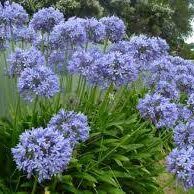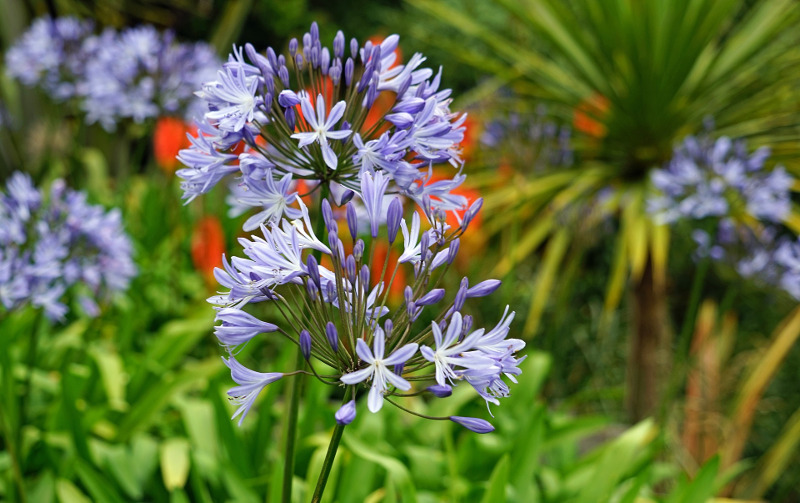Agapanthus Care Tips for Lush and Vibrant Flowers
Unleashing the Secret to Successful Agapanthus Growing: Tips and Techniques for a Flourishing Garden
In the world of horticulture, growing agapanthus efficiently requires a calculated method that incorporates numerous elements of plant care. With careful attention to detail, one can unlock the secrets to nurturing these sensational blossoms, causing a yard that flourishes with appeal and vibrancy. By understanding the subtleties of agapanthus growing, one can develop an atmosphere where these plants grow and bloom generously. In the adhering to conversation, we will check out vital tips and tricks that will direct you in the direction of a thriving agapanthus garden, providing understandings into ideal techniques, dirt problems, sprinkling methods, and much more.
Growing Agapanthus: Best Practices
When growing Agapanthus, correct dirt preparation is vital for ensuring successful development and advancement of these attractive blossoms. Agapanthus, generally referred to as Lily of the Nile or African lily, thrives in well-draining dirt with a slightly acidic to neutral pH level - Agapanthus. Before planting, it is vital to modify heavy clay soils with natural issue such as compost or peat moss to boost drain and offer essential nutrients for the plants
To grow Agapanthus, pick an area that obtains full sunlight to partial color, as this will advertise healthy and balanced development and abundant flowering. Dig a hole twice the diameter of the plant's origin sphere and put the Agapanthus at the exact same deepness it was previously growing. Carefully backfill the hole with soil, pushing down strongly to eliminate any kind of air pockets around the origins.
Water the freshly grown Agapanthus completely and proceed to keep the soil evenly moist, specifically throughout the plant's energetic growing season. Agapanthus. Applying a balanced plant food once a month can additionally sustain the plant's development and flowering. By adhering to these ideal techniques for growing Agapanthus, you can produce a spectacular display screen of these exciting flowers in your garden
Perfect Soil Conditions for Agapanthus
For optimal growth and flowering success of Agapanthus plants, guaranteeing the soil conditions are ideal is vital. Agapanthus flourishes in well-draining dirt with a somewhat acidic to neutral pH degree varying from 6.0 to 7.0. This kind of soil permits sufficient water drain, preventing waterlogging which can bring about root rot. To boost soil water drainage, take into consideration including raw material such as compost or peat moss when preparing the planting site. Moreover, Agapanthus chooses dirt that is rich in nutrients, so incorporating a well balanced fertilizer throughout the expanding season can promote healthy and balanced growth and vivid blooms.

Watering and Feeding Tips
To make certain healthy growth and lively flowers, correct watering and feeding strategies are important for successful Agapanthus cultivation. Agapanthus plants profit from normal watering, particularly during the growing season.
When it concerns fertilizing Agapanthus, a balanced fertilizer with equivalent parts nitrogen, phosphorus, and potassium can be used in the spring to promote healthy growth and blooming. Slow-release plant foods are perfect for giving nutrients progressively over an extensive period. Avoid over-fertilizing, as this can lead to extreme vegetation growth at the expenditure of blooms.
In addition, incorporating raw material like garden compost into the soil can enhance nutrient degrees and enhance soil framework, helping in the overall wellness of the Agapanthus plants. By adhering to these watering and feeding tips, garden enthusiasts can ensure their Agapanthus plants prosper and produce spectacular screens of blossoms.
Pruning and Deadheading Methods
Correct trimming and deadheading techniques play a crucial function in keeping the health and visual appeals of Agapanthus plants, enhancing the essential techniques of watering and fertilizing for successful farming. Trimming Agapanthus entails eliminating invested flower heads, yellowing or dead click this leaves, and overall shaping of the plant to promote far better growth. Deadheading, the process of getting rid of faded blossoms, not only improves the plant's look yet likewise motivates additional blooming.
When deadheading Agapanthus, it is a good idea to snip off the flower stem at the base utilizing sharp, clean shears. This process reroutes the plant's power from seed manufacturing back right into root and foliage growth, advertising a much healthier and more robust plant. Normal deadheading can extend the blooming period of Agapanthus and stop self-seeding, which can bring about congestion.
In terms of pruning, Agapanthus typically take advantage of a light trim after flowering to clean the plant and motivate fresh growth. Cutting down the invested blossom stems and eliminating any type of damaged or dead foliage helps maintain the plant's vitality and general appearance. However, it is necessary to prevent cutting right into the crown of the plant, as this can deteriorate its health and wellness.

Protecting Agapanthus From Vermins and Diseases
Executing reliable insect and illness see here now administration approaches is vital to protecting the wellness and vitality of Agapanthus plants in farming. One common parasite that affects Agapanthus is the Agapanthus borer, a caterpillar that passages right into the plant, causing damages to the flowers and fallen leaves.
In addition to bugs, Agapanthus are susceptible to illness such as origin rot and fungal leaf areas. These concerns can usually be stopped by making certain proper drain and staying clear of overwatering. If signs of illness show up, influenced parts of the plant must be promptly eliminated to protect against further spread. Fungicides may also be used as a treatment procedure, adhering to the supplier's instructions thoroughly. By remaining cautious and addressing pest and disease issues promptly, gardeners can aid their Agapanthus thrive and thrive.

Verdict
In final thought, effective cultivation of agapanthus requires appropriate planting methods, ideal soil problems, sufficient watering and feeding, normal pruning and deadheading, and security from pests and illness. By following these methods and suggestions, garden enthusiasts can guarantee a prospering garden loaded with stunning agapanthus blooms. Agapanthus. Keep in mind to keep constant treatment and attention to information to advertise the health and long life of these stunning plants
When planting Agapanthus, correct dirt prep work is essential for guaranteeing effective development and growth of these lovely flowers.Water the recently planted Agapanthus extensively and proceed to keep the soil uniformly wet, especially during the plant's energetic expanding season.For optimum development and blooming success of Agapanthus plants, guaranteeing the dirt problems are ideal is important. When growing or hair transplanting Agapanthus, guarantee the dirt is well-prepared to give the necessary foundation for the plants to establish themselves effectively. One usual parasite that influences Agapanthus is the Agapanthus borer, a caterpillar that tunnels into the plant, view publisher site causing damages to the fallen leaves and blossoms.